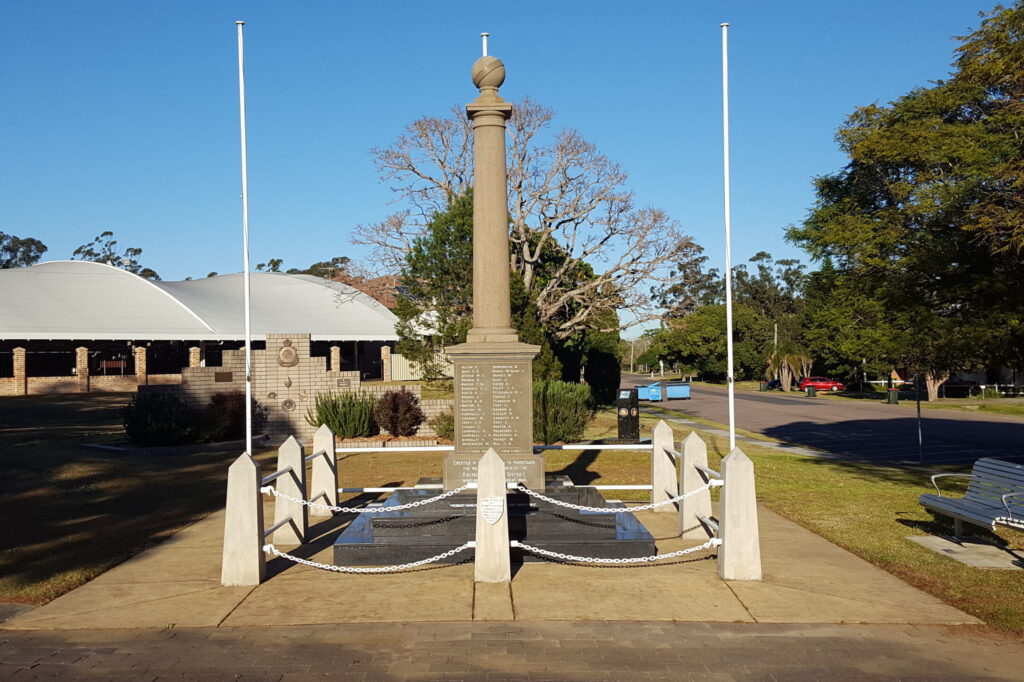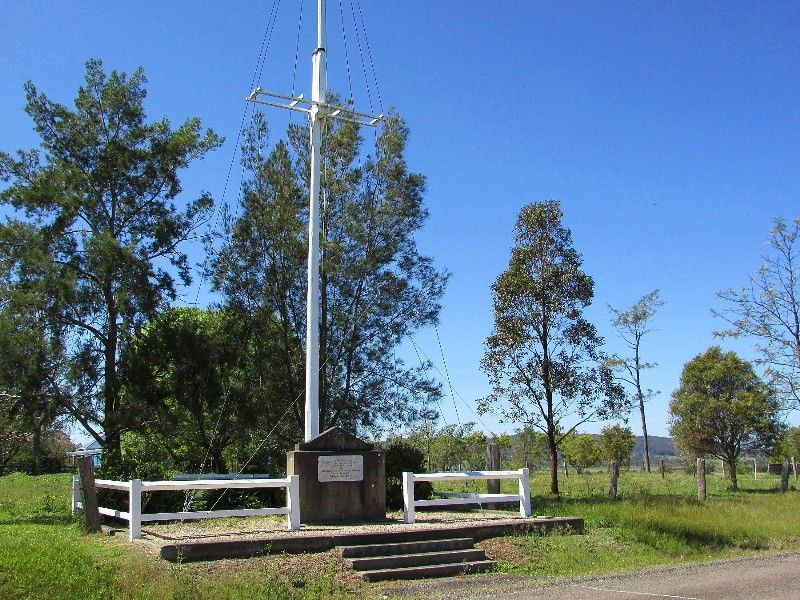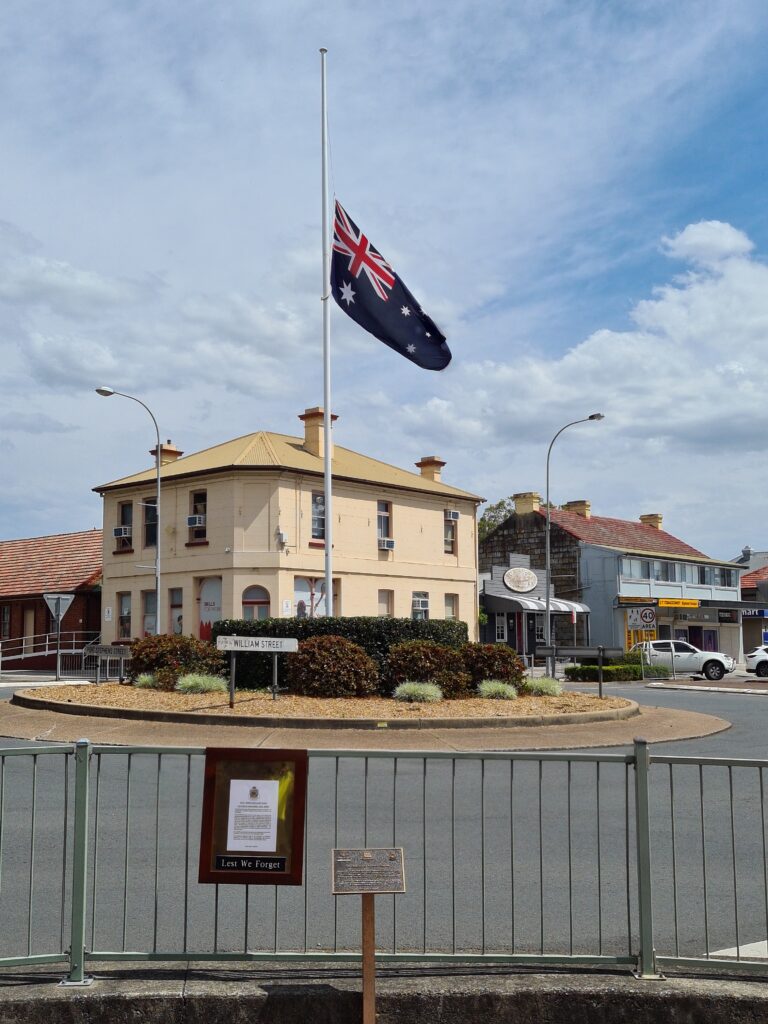Our History
The Raymond Terrace RSL Sub-Branch was established by a group of World War One ‘Returned’ Soldiers and Sailors from the Raymond Terrace district in June 1919. In 1920 members of the Sub-Branch began planning for the construction of a ‘Soldiers Memorial’ in the town.
Funds were raised from community donations and on 14th November, 1925, the Raymond Terrace War Memorial was unveiled in ANZAC Park, Raymond Terrace.
Armistice Day, Remembrance Day and ANZAC Day services have been held at the memorial since that time.
The Raymond Terrace RSL Sub-Branch has been actively involved in the local community for over a century. It is a charitable organisation, registered with the Australian Charities and Not-for-Profit Commission (ACNC), dedicated to providing assistance and welfare support to ex-Service personnel, currently serving Service personnel, widows and their dependents.
It plans and conducts commemorative services throughout the year at both the Raymond Terrace War Memorial and at the “Knitting Circle” War Memorial in East Seaham. The Sub-Branch also oversees the conservation and restoration of war memorials and commemorative parks within the local area.
The Sub-Branch currently has around 100 members.
Sub-Branch Meetings
The Sub-Branch meets at its Meeting Room in the Port Stephens Community Centre, 57 – 59 Port Stephens Street, Raymond Terrace, on the 2nd Wednesday of each month at 7.00PM (1900hrs)
Parking is available at the rear of the building and access is gained via the rear gate and Ground Floor Emergency Exit door.
Sub-Branch Office Holders
| President | Vic Jones | 0435 173 133 |
| Secretary | Greg McKenzie | 0410 317 163 |
| Treasurer | Jim Cordner | 0438 873 611 |
| Vice President | Don Luke | 0427 769 006 |
| Vice President | Bill Myers | 0455 027 415 |
| Welfare Advocate | ||
| Trustee | Don Luke | 0427 769 006 |
| Trustee | John Meredith | 0414 878 737 |
| Trustee | Murray Purkiss | 0427 920 889 |
Our Memorials
The Sub-Branch holds ANZAC Day and Remembrance Day memorial services at two locations where war memorials were established in the district.

The Raymond Terrace War Memorial
Each year an ANZAC Day Dawn Service and ANZAC Day Main Service are held on 25th April, and a Remembrance Day Service is held on 11 November.
In addition to the War Memorial, the following features are also located within the confines of ANZAC Park:
- A National Servicemen’s Memorial;
- A Commemorative Wall;
- A ‘Lone Pine’ tree seeded from the original tree at Lone Pine, Gallipoli Beach, Turkey; and
- A 25lb artillery piece from World War II.
Soon after the establishment of the Raymond Terrace RSL Sub-Branch in 1919, a Soldier’s Memorial Committee was formed to plan for the construction of a Memorial Hall or War Memorial in Raymond Terrace. It was determined that there was insufficient support and funding for the construction of a Memorial Hall so it was decided to proceed with a street memorial. JJ Edstein and Sons won the contract to produce the memorial described as:
- “a trachyte Monument, comprising a base and die with a cap and high circular column topped by an orb. This is all built on three levels of sandstone steps and is fenced in with sandstone piers with galvanised pipes as railings.”
The memorial was funded primarily from private and public donations and cost over £379 Pounds. The memorial was unveiled on 14 November, 1925, and was dedicated with the following words:
“To the brave fellows who went away from this district and made the supreme sacrifice. Let us hope that the memorial erected here by the citizens of the town will serve for all times to remind future generations of the noble efforts and sacrifices made in the cause of right and justice.”
In consultation and cooperation with the Port Stephens Council and the Commonwealth Government, the Sub-Branch has recently developed and funded the ANZAC Park Re-Development Project. This project is designed to undertake a redevelopment of ANZAC Park in order to make it a safer and more suitable venue for the conduct of memorial services into the future. The planned redevelopment is comprised of the following elements:
- Preserve and enhance the existing amenities within the precinct of the Park;
- Construct a replacement Commemorative Wall in sandstone and granite to replace the current, brick Commemorative Wall; and
- Re-landscape the site of the Park to:
- Open up the Park so that attendees at commemorative services held in the Park can gather together safely in the Park with unobstructed views of the War Memorial;
- Improve public safety by encouraging people attending commemorative services to gather within the Park instead of on surrounding roads, traffic island and adjacent properties;
- Provide a focal area for the conduct of commemorative services, the seating of VIP attendees and the placement of other equipment to support the conduct of commemorative services;
- Provide landscaped gardens and lawn area to improve the attractiveness of the Park;
- Provide public seating within the precinct of the Park;
- Ensure that the site remains an attractive focal point capable of catering for the anticipated increased crowds who will attend commemorative services held in the Park into the future.
- Provide suitable site options within the Park for the installation of future military memorial items such as single-Service memorials; specific conflict memorials; noticeboards and display boards; and the display of other items of significant military heritage.
- Develop the Park as an attractive area for local people and visitors to Raymond Terrace for the future.

The Seaham “Knitting Circle” War Memorial

The Centenary of Armistice Flagpole
The Centenary of Armistice Flagpole was installed on the roundabout at the intersection of William and Port Stephens Streets, Raymond Terrace on 02 November 2018. Under a project initiated by the Raymond Terrace RSL Sub-Branch, and jointly funded by the Australian Government and the Port Stephens Council, an old, nine-metre, wooden flagpole was replaced with the current, 12-metre, tapered, aluminium flagpole to mark the centenary of the signing of the armistice in World War I.
A dedication plaque was also erected outside the Clare Castle Hotel. It reads:
This flagpole has been dedicated by the Raymond Terrace RSL Sub-Branch as the Centenary of Armistice Flagpole to commemorate the 100th anniversary of the cessation of hostilities in the First World War, 1914 – 1918, and in memory of the 112 men and women of this district who enlisted in that war.
The purchase and installation of the flagpole in the centre of the roundabout was jointly funded by the Australian Government and the Port Stephens Council. It was inaugurated on 02 November, 2018.
Lest We Forget
To honour our fallen comrades, members of the Raymond Terrace RSL Sub-Branch have formed a Flag Party who take it in turns, week-about, to raise the Australian National Flag before 08:00AM each morning, and lower the flag again each afternoon before sunset. Additionally, whenever a Veteran from this area passes away, on the day of their funeral, we lower the flag to half-mast to honour their service to our nation and a Funeral Notice Board detailing the veteran’s service is installed on the fences outside the Clare Castle Hotel and the NAB Building.
